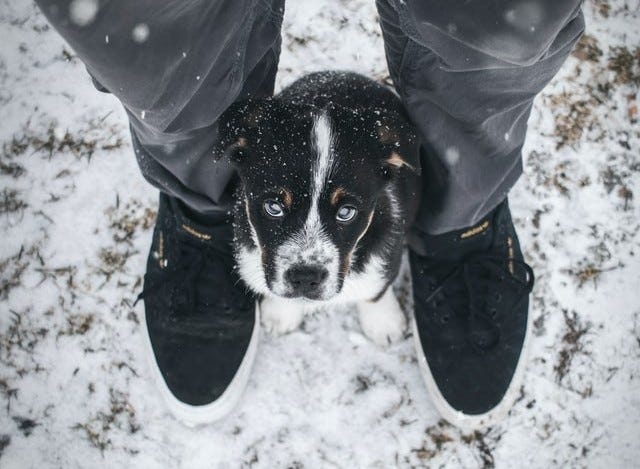The working person’s guide to preventing pet loneliness
Multiply your own loneliness in social isolation 3x to equate it for dogs

If you’ve heard some hilarious tales of socially isolating singles who are bending over backwards to find someone during cuffing season, you know how rough it is out there since December 2019. (On “This American Life” podcast, one lady discussed how she was promised a pie on her date, only to arrive at his home to find out her date ate all but one slice before she got there. She still gave him a chance.)
So if you’re trying to figure out companionship in a world where you’re supposed to stay 6 feet away from everyone and cannot hit up your usual date spots, imagine how a pack animal like a dog feels when you head back to work.
If you’re a dog owner who has never come home to a suspicious piece of tissue, something half eaten from the garbage or a random shoe with tooth marks, your dog may be a robot. No matter what breed the dog is, or how well-behaved, something like this is bound to arise for even the best pet owner. And while the dog may initially be the first to blame, how many owners step back and wonder, “Did this happen because I was gone too long?”
According to a 2016 post from Daily Mail, dogs should never be left at home alone for more than four hours. For the average 9-to-5er, it’s a miracle to get out of the office in eight hours. (If you’ve been able to work from home during the COVID-19 health outbreak, then your dog will be startled to find out she’s been left home that long.)
Gallup goes even further to point out that four out of 10 workers can work up to approximately 50 hours per week. Midday dog-walkers should be a given, but when the owner gets home, shouldn’t they have just as much right to relax with their pets as a stay-at-home mom, retiree or a work-from-home professional does?
ADVERTISEMENT ~ Amazon
As an Amazon affiliate, I earn a percentage from purchases with my referral links. I know some consumers are choosing to boycott Amazon for its DEI removal. However, after thinking about this thoroughly, I want to continue promoting cool products from small businesses, women-owned businesses and (specifically) Black-owned businesses who still feature their items on Amazon. As of the first date of Black History Month 2025, each new post will ALWAYS include a MINIMUM of one product sold by a Black-owned business. (I have visited the seller’s official site to verify that Amazon Black-owned logo.) I am (slowly) doing this with older, popular posts too. If you still choose to boycott, I 100% respect that decision.

There are countless studies pointing out how pets can help to reduce anxiety, depression and loneliness in people’s homes, nursing homes and hospitals, but pets are often prone to the same anxiety, depression and loneliness that we humans experience. Among the reasons pets act out is because of insufficient love, affection or just the plain presence of their owners, an insufficient amount of exercise and enrichment, but also, insufficient training and conditioning to be left alone.
Neglect is actually a common sign of dog abuse. Sometimes pets are neglected because the owner has so many pets that they can’t be reasonably take care of them. These types of owners are oblivious to infections or diseases because they’re not around their pets often enough to notice behavioral differences. The animals are often kept inside of cages or rooms all day without being let out, they’re not bathed regularly and properly, and they’re not provided with regular fresh food and water on a daily basis.

A neglectful owner may punish a dog for scratching up the carpet without even noticing that the act could be a cry of abandonment — or worse, it could be due to stress, related to a pet disease. A dog incessantly walking around in circles or rubbing up against furniture could be overlooked as the animal trying to get comfortable, but it could actually be a reaction to a serious ear infection or hearing loss.
After a long, hard day at the office, who has time to sit and stare at their dogs long enough to notice unusual behaviors? For those who choose to be pet owners, the answer is simple: YOU do.
Recommended Read: “Adopting a dog during the coronavirus scare ~ How to socialize your pet during social isolation”
Whether you just adopted a dog during COVID-19 or had your dog before then, house training your dog is top priority. Whether allowing the dog to roam free about the house, or confining them in a crate or a specific “dog room,” the pet should learn to be on its own for a few minutes, up to a few hours so it can prepare itself to be left alone for extended periods of time. This type of training, while not at all difficult, requires commitment and consistency.



